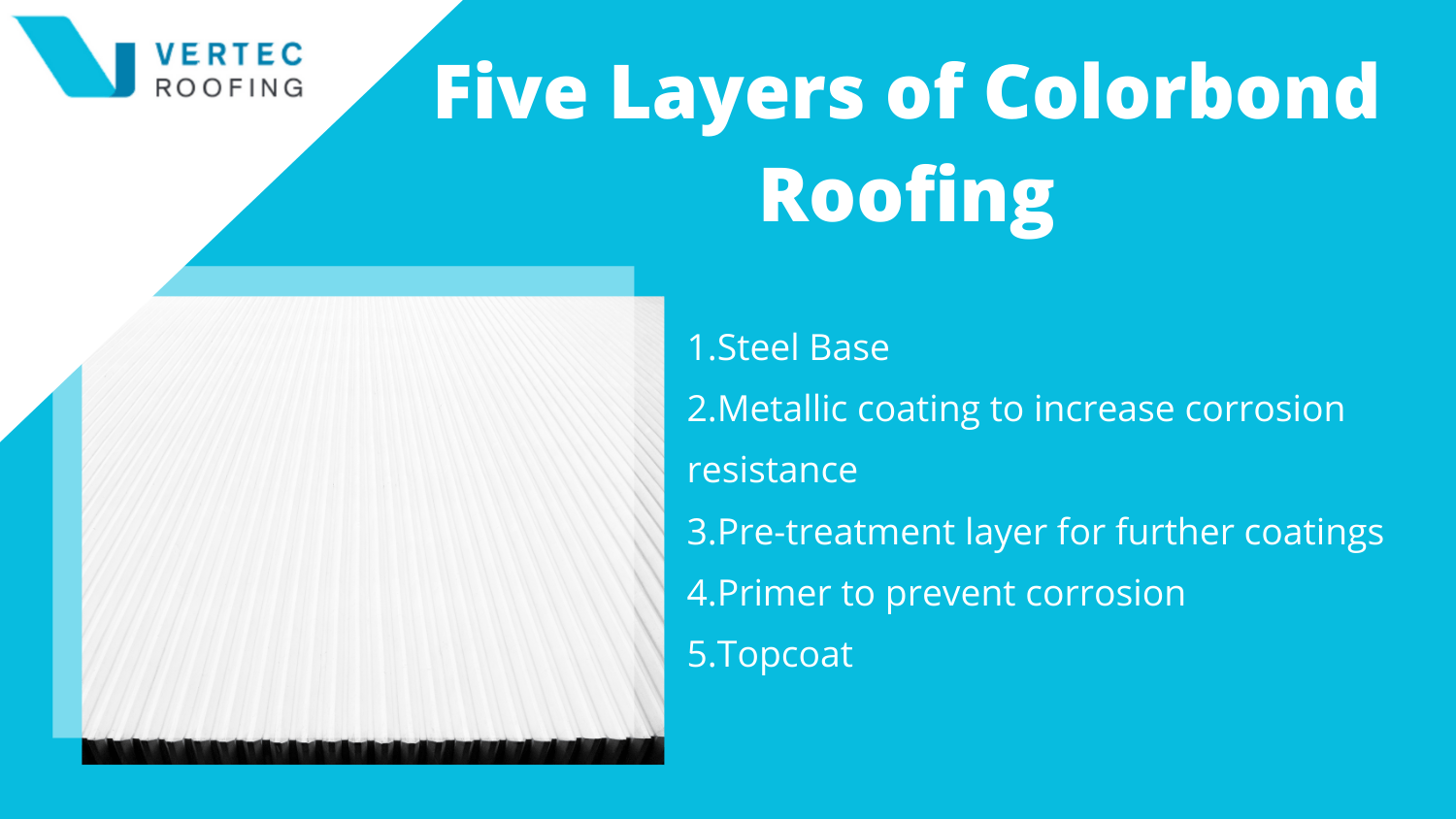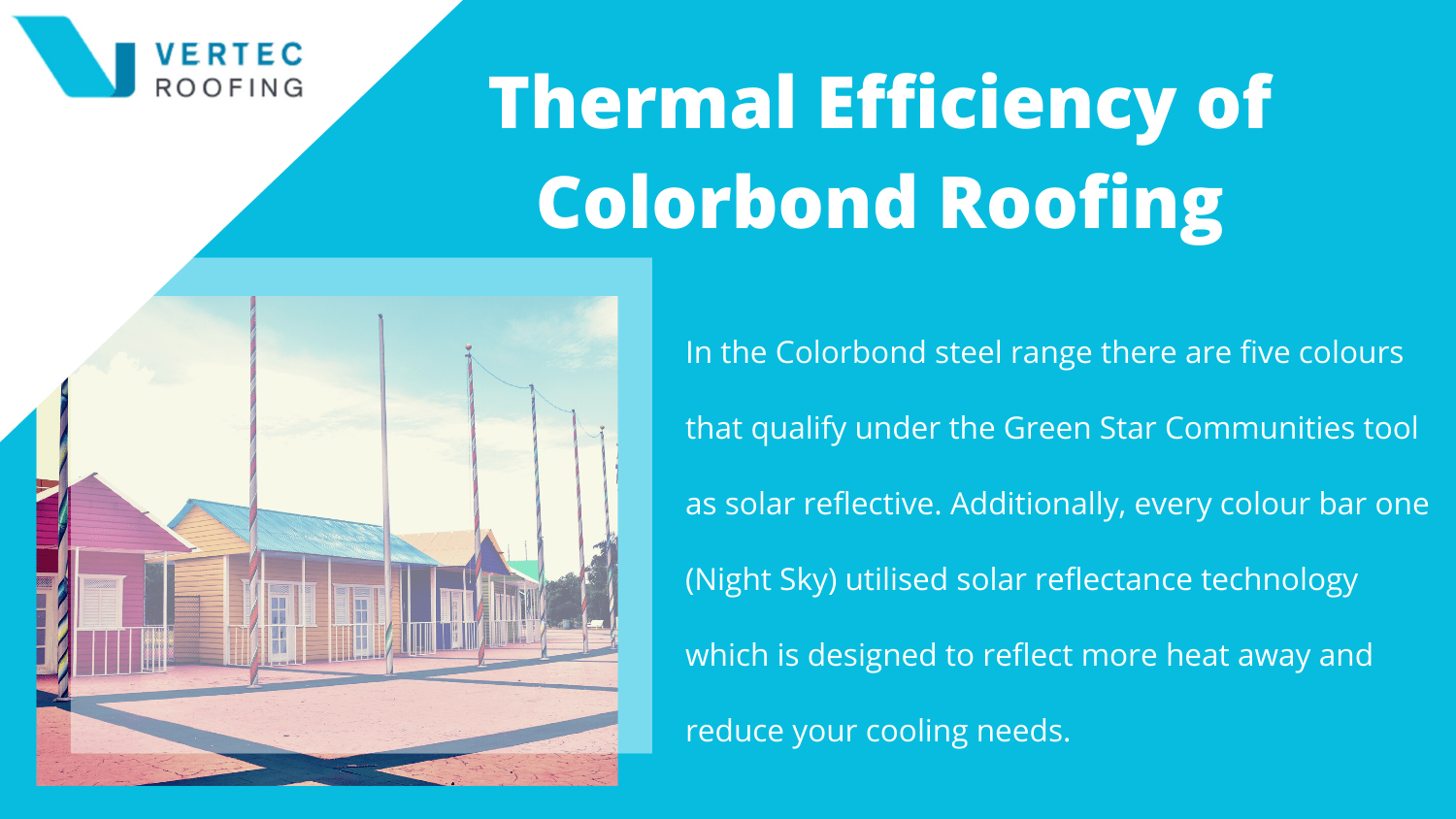

When it comes to roofing, many Sydney residents and business owners are choosing Colorbond. We have seen Colorbond used for roofs, gutters, fences, garages and even works of art. With over 50 years supplying Australians with roofing, Colorbond Steel has established itself firmly as a reputable and reliable supplier with many different types of Colorbond roofing and steel products of other residential and commercial applications. But are there different types of Colorbond Roofing and how do you know which one to choose?
Well do not worry, as the experts in metal roofing in Sydney, we’ve got you covered at Vertec Roofing. We’re going to walk you through a simple guide for Colorbond roofing profiles and the types of Colorbond roofing available in Australia.
Typically speaking, most homes and roofs use the same grade of Colorbond steel. Colorbond roofing is made up of five layers to ensure maximum durability and performance. The five layers are:

1. Steel Base
2. Metallic coating to increase corrosion resistance
3. Pre-treatment layer for further coatings
4. Primer to prevent corrosion
5. Topcoat
The multi layered approach ensures this roofing product can stand the test of time in what can be harsh conditions in various parts of Australia. When looking at various roofing options, most people simply consider the topcoat. For Colorbond roofing, this is the key differentiator when people are choosing what type of roofing sheets to buy. However, the grade of the steel sheets is the same. Even for adverse conditions, the same Colorbond steel used for general urban conditions is also applicable. For example, regions that experience cyclones can still use Colorbond steel; the only difference would be how the roofing is fixed in place per building regulations for that region.
There is a wide variety of choices available in Colorbond Roofing. However, the majority of Australian homes with Colorbond are relying on a similar formulation. The only truly unique type of Colorbond roofing available and suitable for limited Australian homes would be Colorbond Ultra Steel® which is designed for environments exposed to salt or salt spray; ideal for coastal environments. The Ultra Steel is often recommended for environments approximately 100-200 metres from breaking ocean waves. Additionally, fumes or particle fall out from emissions 100-200 metres from the source can be reduced. Particularly for industrial applications, we recommend you talk to a qualified and expert roofing professional to ensure you are using the correct products and materials for your roofing and regional requirements.
Another factor to consider when choosing the right type of Colorbond roofing is the integrity and strength of that product, which is in terms of Base Metal Thickness. This is the thickness of that first layer that we talked about above. Typical thicknesses for Colorbond roofs are .42, .48 and .55 BMT. Different BMT measurements are suited for different applications and roof types.
To figure out which one would be best for you talk to a roofing professional who can make a recommendation based on your needs and the configuration of your building. It is also important to make sure ensure your Colorbond is genuine and under warranty. There are many steel roofing products out there on the market which look similar but may not provide the same value in terms of performance. Be sure to check with your roofing supplier that the product is genuine and covered under warranty, a company like ours always uses genuine products and is happy help our customers figure out the right solution for them.

Grades and thicknesses aside, the major point of difference for Colorbond roofs are the colours and finishes applied. For many this is an aesthetic choice but can also impact performance, so let’s take a further look.
There are four different types of colour bond roofing colour ranges which are Classic, Contemporary, Matt and Ultra. The choice of colour can have a significant impact on the thermal efficiency of your roof. A highly efficient roof can reflect heat away from your home and reduce your cooling bill. Typically, the lighter the colour, the more reflective it will be however the performance of your roof also depends on its shape and orientation.
In the Colorbond steel range, there are five colours that qualify under the Green Star Communities tool as solar reflective. Additionally, every colour bar one (Night Sky) utilised solar reflectance technology which is designed to reflect more heat away and reduce your cooling needs. Colorbond also offer a matt range in five different colours if you are looking for a more subtle and flatter aesthetic for your roof.
Choosing the right types of Colorbond roofing colour for your home can be difficult as it is hard to gauge how a whole roof will look from a small sample. Make sure to do thorough research, on the Colorbond website you can view the full range of colours, the inspiration for them as well as a visualiser. Other important factors to consider are the style and shape of your roof, the architecture of your house as well as features of the surrounding environment. Additionally, depending on where you live some councils require approval and planning when updating your roof, so be sure to check local guidelines.
If you are still curious about the different types of Colorbond roofing and Colorbond roofing profiles please don’t hesitate to get in contact with our friendly team at Vertec Roofing on (02) 8007 4366. We also offer leading roof repairs, roof maintenance, roof restoration, roof replacement and gutter and fascia replacement in Sydney.

At Vertec Roofing, we believe roofing is about protecting homes and enhancing comfort.